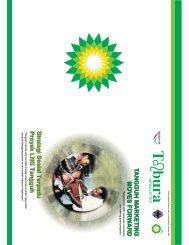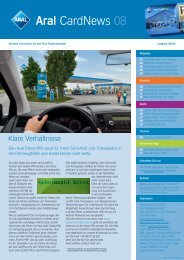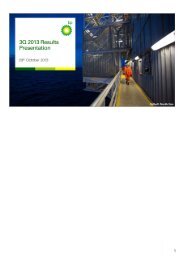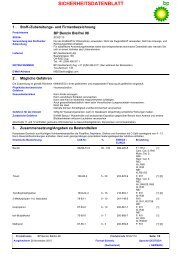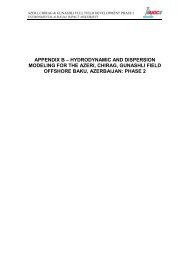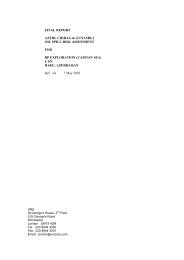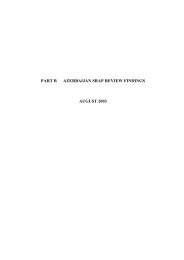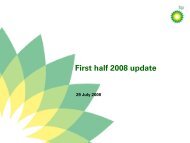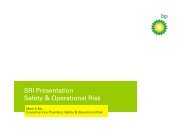Don Field Decommissioning Programme (pdf, 7.8MB) null - BP
Don Field Decommissioning Programme (pdf, 7.8MB) null - BP
Don Field Decommissioning Programme (pdf, 7.8MB) null - BP
You also want an ePaper? Increase the reach of your titles
YUMPU automatically turns print PDFs into web optimized ePapers that Google loves.
DON-<strong>BP</strong>-001<strong>Don</strong> <strong>Field</strong> <strong>Decommissioning</strong> <strong>Programme</strong>There are particular challenges associated with removal of stabilisation mattresses,pipelines and supports which inevitably impose risk to divers assisting during theoperations. In addition, the crossings are designed to protect the NLGP, which is a live20in gas pipeline located untrenched, directly beneath the crossing.Selective recovery reduces the risk to other users of the sea. However, since themajority of the buried pipelines and umbilicals remain, inspection and remedialmaintenance will ensure the risk to others sea users remains low.As an alternative to the direct selective recovery discussed above, recovery of the NLGPcrossings can be deferred until it can be safely carried out in conjunction with thedecommissioning of the 20in NLGP. The deferred selective recovery option offers thebenefit of reducing the risk of recovering the umbilicals over the live 20in NLGP.6.5.4 Full Recovery by Reverse ReelingThis option would leave a clean seabed after decommissioning and eliminates bothpotential hazards to other users of the sea and the perpetual liability for inspection andremedial maintenance. The procedure of umbilical recovery by reverse reeling isdescribed in Paragraph 2.2.1.Removal of soil cover or jetting may be required prior to recovery. Stabilisation featuresinstalled on the top of the umbilicals would also need to be removed. It is technicallyfeasible to recover the two umbilicals simultaneously. Reverse reeling would be subjectto further detailed engineering to confirm suitability, practicability and to identifyadditional assurances needed.6.5.5 Full Recovery by Cut and LiftThis option would leave a clean seabed after decommissioning and eliminates bothpotential hazards to other users of the sea and the perpetual liability for inspectionand remedial maintenance. The procedure of pipeline recovery by cut and lift isdescribed in Paragraph 2.2.3.Removal of soil cover or jetting is required prior to recovery. Stabilisation featuresinstalled on the top of the umbilicals should also be removed. Subsea cutting ofumbilicals can be safely carried out using suitable ROVs.6.6 Assessment of Options for the Umbilicals6.6.1 GeneralThe assessment of decommissioning options [10.3] was performed using the samesystem of criteria considered for the two 8in pipelines, as follows: Technical (complexity and associated technical risk) Safety (short and long-term hazards/risks) Environmental (ecosystem impact, energy and waste considerations) Social (effects on other users of the sea, eg shipping and fishing) Economic criteria, ie the cost and timescale of the workResults are detailed in Table 10.7.Pipelines10-36 May 2011




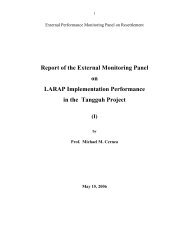
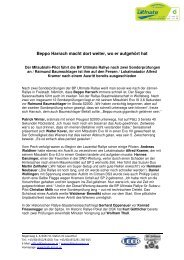
![[PDF] Deepwater Horizon: Accident Investigation Report - BP](https://img.yumpu.com/51697031/1/190x245/pdf-deepwater-horizon-accident-investigation-report-bp.jpg?quality=85)
